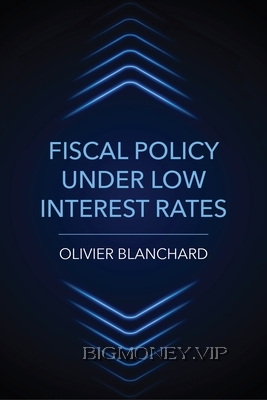
1 Introduction
It is an understatement to say that policymakers in advanced economies
face an unusual fiscal environment. The basic numbers are given in table
1.1 for seven major countries (as of the time of writing in January 2022).
Net debt ratios are historically high, in most countries above 100%; except
for Germany, they are substantially higher than they were in 2007, the year
before the Global Financial Crisis. Deficit ratios are also extremely high;
they largely reflect the lasting effects of the Covid crisis, but they were
already fairly large in 2019, before Covid, in particular in the United States
and in Japan. At the same time, nominal interest rates are extremely low;
three-month rates on government bonds are often negative and 10-year rates
are very low. In all cases, 10-year nominal rates are below expected
inflation, implying negative real rates.
This has led policy-makers and academics to often reach drastically
different conclusions about what fiscal policy should do at this juncture.
Some, focused on the very high levels of debt, have argued for a need for
urgent fiscal consolidation and a steady decrease in debt. Some have argued
that it is enough to stabilize the debt and accept these higher levels. Some,
focused on the very low rates, have argued that this is a great time for
governments to borrow, especially if this is done to finance public
investment. Yet others have argued for more radical solutions—for
example, the cancellation of the debt held by central banks.
What policymakers conclude and do will soon matter a lot. Many believe
that in the wake of the Global Financial Crisis, the desire to decrease debt
and the resulting fiscal consolidation were too strong, leading to a slower
recovery. Policymakers in Europe now face a very concrete issue: Amid the
Covid crisis, current EU fiscal rules have been suspended. The old rules are
largely seen as in need of serious reforms. European Union policy makers
have to redesign them in the right way.
The rest of this chapter offers a guided tour of the book and its major
conclusions. It is simply a compendium of the introductions to each
chapter. Thus, think of it as Cliffs Notes for the hurried reader. If you are
really in a hurry, the basic theme of the book is summarized in the very last
chapter. If you actually intend to read the whole book, you may want to go
directly to the chapters themselves.
Chapter 2 introduces five notions related to interest rates, which will be
useful throughout the book.
One is the neutral interest rate, r, which can be defined in two
equivalent ways. The first is that it is the safe real interest rate such that
saving is equal to investment, assuming output is equal to potential output.
The second is that it is the safe real interest rate such that aggregate demand




